#USS Houston
Text

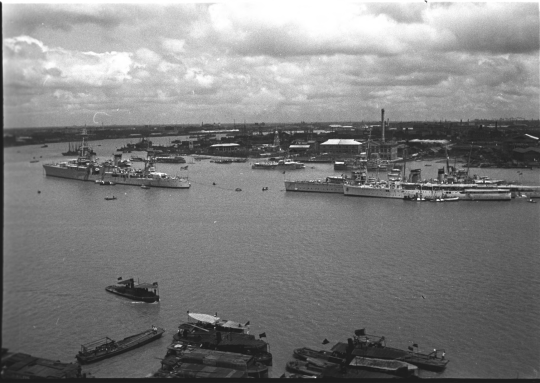


USS HOUSTON (CA-30) and USS AUGUSTA (CA-31) on the Wusong river (Suzhou Creek) in Shanghai, China. Photographed during the Sino-Japanese Hostilities.
Date: February 1932
University of Wisconsin, Milwaukee Library: pe000035, fr208399, pe001214, fr202530
#USS HOUSTON (CA-30)#USS HOUSTON#USS AUGUSTA (CA-30)#USS AUGUSTA#Northampton Class#Cruiser#Warship#Ship#United States Navy#U.S. Navy#US Navy#USN#Navy#Shanghai#China#Sino-Japanese Hostilities#February#1932#interwar period#my post
27 notes
·
View notes
Text
82 Tahun Kapal HMAS Perth I dan USS Houston (CA-30) Tenggelam di Selat Sunda
JAKARTA – Penjabat (Pj) Gubernur Banten Al Muktabar menghadiri upacara memperingati Tenggelamnya kapal HMAS Perth I dan USS Houston (CA-30) di Kantor Kedutaan Besar Amerika Serikat, Jl. Medan Merdeka Selatan, Kecamatan Gambir, Kota Jakarta Pusat, Jumat (1/3/2024).
“Tadi kita mendapatkan kehormatan untuk hadir memperingati peristiwa tenggelamnya kapal HMAS Perth I dan USS Houston (CA-30) yang…

View On WordPress
0 notes
Text
So the second and third in command of the USS Medina, the first faster than light colony ship, wake up after 20 years in cryonic hibernation, ready to land on New Earth. Two minor problems present themselves:
1. The captain, who was supposed to wake up shortly before them, isn't there. His chamber is empty. All the landing vehicles are still accounted for. Where did he go?
2. New Earth looks too much like Old Earth. Like, the probes said it was much like earth, but we didn't expect it'd be so similar that it has a South America. And we're getting a hail from Houston... This is just Earth.
We went in a big circle, somehow losing the captain along the way. And why is Houston so happy to see us? We clearly failed.
#my writing#Project v#This is a story I plotted out in 2006 and did nothing with#So why not ramble about it now?
303 notes
·
View notes
Text

Today In History
Doris Miller, African-American hero of World War II, the son of sharecroppers Connery and Henrietta Miller, enlisted in the United States Navy at its Dallas recruiting station.
Following bootcamp training in Norfolk, Virginia, he was assigned to the USS West Virginia as a messman.
On December 7, 1941, Mess Attendant Second Class Doris Miller was collecting soiled laundry just before 8:00 A.M. when the first bombs blasted his ship at anchor in Pearl Harbor. Miller went to the main deck where he assisted in moving the mortally wounded captain.
He then raced to an unattended deck gun and fired at the attacking planes until forced to abandon ship. It was Miller’s first experience firing such a weapon because black sailors serving in the segregated steward’s branch of the Navy were not given the gunnery training received by white sailors.
Navy officials conferred the Navy Cross upon Miller on May 27, 1942, in a ceremony at Pearl Harbor.
In addition to conferring upon him the Navy Cross, the Navy honored Doris Miller by naming a dining hall, a barracks, and a destroyer escort for him. The USS Miller is the third naval ship to be named after a black Navy man.
In Waco a YMCA branch, a park, and a cemetery bear his name. In Houston, Texas, and in Philadelphia, Pennsylvania, elementary schools have been named for him, as has a Veterans of Foreign Wars chapter in Los Angeles. An auditorium on the campus of Huston-Tillotson College in Austin is dedicated to his memory. In Chicago the Doris Miller Foundation honors persons who make significant contributions to racial understanding.
CARTER™️ Magazine
#carter magazine#carter#historyandhiphop365#wherehistoryandhiphopmeet#history#cartermagazine#today in history#staywoke#blackhistory#blackhistorymonth#doris miller
192 notes
·
View notes
Text
‘I Want To Do My Part’
When the USS Gregory sank in 1942, a mess hall officer named Charles Jackson French dragged a raft full of his wounded crewmates to safety through shark-infested waters.
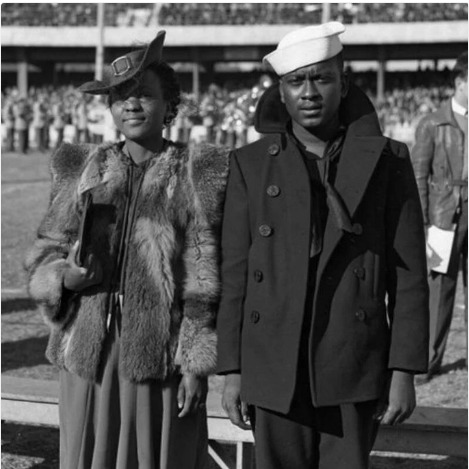
Born on Sept. 29, 1919, Charles Jackson French spent his early years in Foreman, Arkansas. At the time, Black and white pools were segregated, making it difficult for Black people to find opportunities to learn to swim. Swimming World Magazine speculates that French may have learned to swim by visiting the city’s stone quarries and the Red River.
However he learned to swim, French’s days in Foreman were numbered. After his parents died, he left Arkansas and moved in with his married, older sister Viola in Omaha, Nebraska. And by the time he was 18, French decided to strike out on his own and enlist in the U.S. Navy
The Navy, like swimming pools across the country, was strictly segregated. As a Black man, French had virtually no other choice than to work as a mess attendant. In that capacity, the U.S. Navy Office Of Information reports that French spent four years the USS Houston, serving meals to the white sailors, cleaning their tables, and keeping the mess hall spick and span.
French returned to Omaha when his deployment ended in November 1941, but he wouldn’t stay in Nebraska for long. After the Japanese attack on Pearl Harbor on Dec. 7, 1941, French promptly re-enlisted.
“I want to do my part, because I’m already trained and I can start right away,” French said at the time.
He had spent his last tour cruising around the Pacific. But this time, Charles Jackson French would see significantly more action.
On Sept. 5, 1942, the USS Gregory and the USS Little were attacked by Japanese destroyers around 1 a.m. while patrolling the waters near Savo Island and Guadalcanal. The U.S. Navy Office Of Information reports that the Gregory, outgunned, sank after just three minutes. Its surviving men were plunged into shark-infested waters as the Japanese fired on them.
But French leaped into action. The 23-year-old helped injured sailors onto a makeshift raft and — when U.S. Navy Ensign Robert Adrian told him that the current would pull the raft toward a Japanese-occupied island — volunteered to jump in the water and pull the raft in the other direction.
Adrian told him it was impossible. French, according to Adrian, replied: “Just keep telling me if I’m goin’ the right way.”
He shed his waterlogged clothes, tied a rope around his waist, and started to swim. For the next six to eight hours, French tirelessly swam as sharks got so close that they sometimes brushed against his legs. At sunrise, an American scout finally spotted him and the others and sent rescue.
But French’s ordeal didn’t end there. As he later recounted, as recorded by Chester Wright in Black Men and Blue Water, French and other uninjured soldiers were taken to a rest camp by their rescuers, who wanted to separate French from the white sailors. To French’s surprise, the sailors insisted that French stay with them as a fellow member of Gregory’s crew.
“Them white boys stood up for me,” French emotionally told Wright.
The story of Charles Jackson French’s heroism was later made public by Adrian, who described it on a radio program called It Happened in the Service in October 1942, according to Swimming World Magazine. Adrian had never learned French’s full name — he and the others only knew him as “French” — but he fully credited him for their rescue that day.
“I can assure you that all the men on that raft are grateful to mess attendant French for his brave action off Guadacanal that night,” Adrian said.
The story was soon picked up by the national news, and Charles Jackson French was identified by NBC. He was celebrated across the country, featured in a comic strip, and lauded by the Black press.
Adrian “and other white Americans owe their LIVES to a black man whom he identified as a ‘mess attendant named French,'” the Pittsburgh Courier, a Black newspaper, wrote after French was identified.
The newspaper continued: “Although Mess Attendant Charles Jackson French of Arkansas was not in a heroic job, he MADE a heroic job out of it. He who had been looked down upon as a caste man, frozen in status, suddenly was looked up to as a SAVIOUR.”
Though rumors spread that Charles Jackson French might be awarded the Navy Cross, he was given only a letter of commendation from Admiral William F. Halsey, Jr., the then-commander of the Southern Pacific Fleet.
French may have been denied the medal because a Silver Star was awarded to one of his superiors — and it was unprecedented to award a higher medal to a subordinate. But the Omaha World-Herald noted some decades later that future president John F. Kennedy had been given the Navy and Marine Corps Medal for a similar act of bravery.
After his service on the USS Gregory, Charles Jackson French didn’t rest on his laurels. He returned to his role in the mess on the USS Endicott and the USS Frankford, and witnessed D-Day and the invasion of southern France.
After World War II ended, French faded from the public eye. Black Past reports that he suffered from alcoholism and depression, and passed away on Nov. 7, 1956, in San Diego, California. He was only 37 years old.
But since then, there’s been a push to give this forgotten World War II hero his due. In April 2021, a post about French from the International Swimming Hall of Fame revived his story. And a year later, Rear Admiral Charles Brown, the Navy public affairs officer, presented eight of French’s relatives with a posthumous Navy and Marine Corps Medal — just like Kennedy’s.
“It will inspire generations of sailors,” Brown said at the medal ceremony, reported by the Omaha World-Herald. “It’s a story of the best of who we are.”
French has been honored in other ways, too. A training pool at Naval Base San Diego was named after French, and a post office in his hometown of Omaha also bears his name.
Black History Month Day 24
733 notes
·
View notes
Photo

Los Angeles Flight I-class nuclear-powered attack submarine USS Houston (SSN-713) broaching at full power, taken while filming "The Hunt for Red October" off the coast of Southern California, 1989.
65 notes
·
View notes
Text

RIP NASA astronaut Ken Mattingly
October 31, 2023 Rear Admiral & NASA astronaut Ken Mattingly passed away aged 87. He flew on Apollo 16, STS-4 and STS51-C.
1972, April 27, the Apollo 16 returned to Earth After 11 days, the Apollo 16 astronauts, CMP Thomas Mattingly, LMP Charles Duke and Commander John Young are greeted aboard the aircraft carrier USS Ticonderoga in the Pacific Ocean, 350 km southeast of the island Kiritimati.
Two days later, in Houston Texas, the astronauts were reunited with their families as this photo shows Ken Mattingly embrasing his wife Elisabeth. Note his NASA-issued Omega Speedmaster n°50.
(Photo: NASA/AP)
#Aviator#Astronaut#Admiral#NASA#Apollo#military#montres#MoonwatchUniverse#chronograph#spaceflight#Speedmaster#Speedytuesday#uhren#test pilot#Zulu time
21 notes
·
View notes
Note
Heyo, doing some modeling, know you’re big into the Asiatic Fleet naval history stuff- would you happen to know if USS Houston’s masts and spotting too were also in cavite blue? Also would you know if the accompanying destroyers had any camouflage schemes? Specifically Edsall? Or did she just go around in hull gray and her big old 219?
thanks :)
Lets see, based on these photographs:


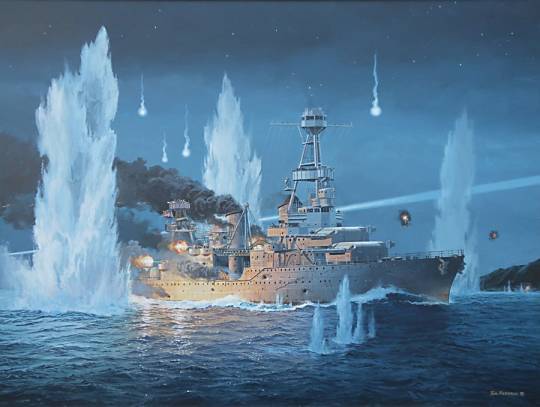

I believe Houston's superstructure, masts, and front stack were gray and the rest of her cavite blue.
As for Edsall I believe she would have been in gray, but they likely did take off her big number on her bow, judging by pictures like that of USS Stewart and Asheville.


14 notes
·
View notes
Text
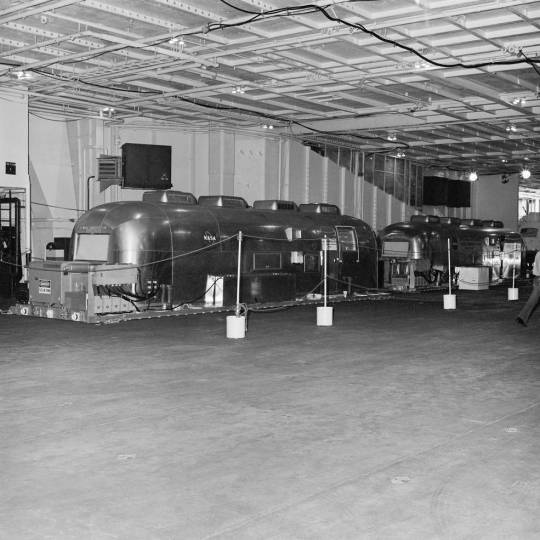
The two Mobile Quarantine Facilities (MQF) below decks on the USS Hornet prior to recovery operations of the Apollo 12 astronauts.
"The MQFs, one prime and one backup, served as the initial quarantine location for the astronauts after splashdown until they reached the Lunar Receiving Laboratory (LRL) at the Manned Spacecraft Center (MSC), now the Johnson Space Center in Houston. The major change in the recovery protocols involved the astronauts no longer having to wear the hot and bulky Biological Isolation Garments (BIGs) worn by the Apollo 11 crew – managers decided that clean overalls and respirators provided adequate protection against back-contamination since scientists found no evidence of any pathogenic lunar microorganisms in the Apollo 11 samples."
"It is widely claimed that a common type of bacterium, Streptococcus mitis, accidentally contaminated the Surveyor's camera prior to launch, and that the bacteria survived dormant in the harsh lunar environment for two and a half years, supposedly then to be detected when Apollo 12 brought the Surveyor's camera back to the Earth. This claim has been cited by some as providing credence to the idea of interplanetary panspermia, but more importantly, it led NASA to adopt strict abiotic procedures for space probes to prevent contamination of the planet Mars and other astronomical bodies that are suspected of having conditions possibly suitable for life. Most dramatically, the Galileo space probe was deliberately destroyed at the end of its mission by crashing it into Jupiter, to avoid the possibility of contaminating the Jovian moon Europa with bacteria from Earth. The Cassini probe also impacted Saturn at the end of its mission in 2017.
However, independent investigators have challenged the claim of surviving bacteria on Surveyor 3 on the Moon. There is a possibility the contamination was caused by using a non-airtight container, or when the samples were being taken in the clean room after Apollo 12."
-information from Wikipedia: link
Date: November 24, 1969
NASA ID: link
#Apollo 12#NASA#Apollo Program#H-type mission#Splash Down#Splashdown#Recovery#USS Hornet (CV-12)#USS Hornet#Essex Class#Aircraft Carrier#Pacific Ocean#November#1969#United States Navy#US#Navy#USN#my post
11 notes
·
View notes
Text
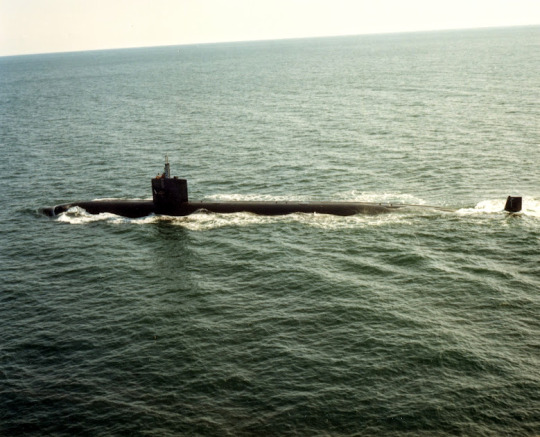
(1/10/1983)USS Houston (SSN-713): A port view of the nuclear-powered attack submarine USS Houston (SSN-713) underway. National Archives & Records Administration
USN Image/ PH1 Cline/PH3 Frazer
41 notes
·
View notes
Text
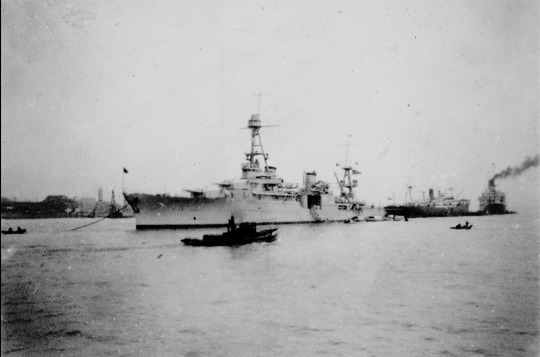



USS HOUSTON (CA-30) in Shanghai during the Sino-Japanese Hostilities.
Date:February 1932.
Historical Photos of China: ep01-365, ep01-373, Ep01-408, Ep01-369
#USS HOUSTON (CA-30)#USS HOUSTON#Northampton Class#Cruiser#Warship#Ship#United States Navy#U.S. Navy#US Navy#USN#Navy#Shanghai#China#Sino-Japanese War#February#1932#interwar period#my post
24 notes
·
View notes
Photo


Splashdown! NASA’s Orion Returns to Earth After Historic Moon Mission NASA’s Orion spacecraft splashed down in the Pacific Ocean, west of Baja California, at 9:40 a.m. PST Sunday after a record-breaking mission, traveling more than 1.4 million miles on a path around the Moon and returning safely to Earth, completing the Artemis I flight test. Splashdown is the final milestone of the Artemis I mission that began with a successful liftoff of NASA’s Space Launch System (SLS) rocket Nov. 16, from Launch Pad 39B at NASA’s Kennedy Space Center in Florida. Over the course of 25.5 days, NASA tested Orion in the harsh environment of deep space before flying astronauts on Artemis II. “The splashdown of the Orion spacecraft – which occurred 50 years to the day of the Apollo 17 Moon landing – is the crowning achievement of Artemis I. From the launch of the world’s most powerful rocket to the exceptional journey around the Moon and back to Earth, this flight test is a major step forward in the Artemis Generation of lunar exploration,” said NASA Administrator Bill Nelson. “It wouldn’t be possible without the incredible NASA team. For years, thousands of individuals have poured themselves into this mission, which is inspiring the world to work together to reach untouched cosmic shores. Today is a huge win for NASA, the United States, our international partners, and all of humanity.” During the mission, Orion performed two lunar flybys, coming within 80 miles of the lunar surface. At its farthest distance during the mission, Orion traveled nearly 270,000 miles from our home planet, more than 1,000 times farther than where the International Space Station orbits Earth, to intentionally stress systems before flying crew. “With Orion safely returned to Earth we can begin to see our next mission on the horizon which will fly crew to the Moon for the first time as a part of the next era of exploration,” said Jim Free, NASA associate administrator for the Exploration Systems Development Mission Directorate. “This begins our path to a regular cadence of missions and a sustained human presence at the Moon for scientific discovery and to prepare for human missions to Mars.” Prior to entering the Earth’s atmosphere, the crew module separated from its service module, which is the propulsive powerhouse provided by ESA (European Space Agency). During re-entry, Orion endured temperatures about half as hot as the surface of the Sun at about 5,000 degrees Fahrenheit. Within about 20 minutes, Orion slowed from nearly 25,000 mph to about 20 mph for its parachute-assisted splashdown. During the flight test, Orion stayed in space longer than any spacecraft designed for astronauts has done without docking to a space station. While in a distant lunar orbit, Orion surpassed the record for distance traveled by a spacecraft designed to carry humans, previously set during Apollo 13. “Orion has returned from the Moon and is safely back on planet Earth,” said Mike Sarafin, Artemis I mission manager. “With splashdown we have successfully operated Orion in the deep space environment, where it exceeded our expectations, and demonstrated that Orion can withstand the extreme conditions of returning through Earth’s atmosphere from lunar velocities.” Recovery teams are now working to secure Orion for the journey home. NASA leads the interagency landing and recovery team on the USS Portland, which consists of personnel and assets from the U.S. Department of Defense, including Navy amphibious specialists, Space Force weather specialists, and Air Force specialists, as well as engineers and technicians from NASA Kennedy, the agency’s Johnson Space Center in Houston, and Lockheed Martin Space Operations. In the coming days, Orion will return to shore where technicians will offload the spacecraft and transfer it by truck back to Kennedy. Once at Kennedy, teams will open the hatch and unload several payloads, including Commander Moonikin Campos, the space biology experiments, Snoopy, and the official flight kit. Next, the capsule and its heat shield will undergo testing and analysis over the course of several months. Artemis I was the first integrated test of NASA’s deep space exploration systems - the Orion spacecraft, SLS rocket, and the supporting ground systems - and was supported by thousands of people around the world, from contractors who built the spacecraft and rocket, and the ground infrastructure needed to launch them, to international and university partners, to small businesses supplying subsystems and components. Through Artemis missions, NASA will land the first woman and the first person of color on the surface of the Moon, paving the way for a long-term lunar presence and serving as a steppingstone for astronauts on the way to Mars.
53 notes
·
View notes
Text

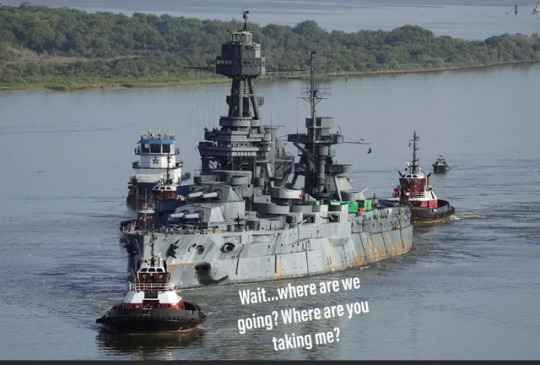

Old girl helped get us through both world wars, glad they're fixin her up right
#doge#uss texas#us navy#le get those guns working and she'll still scare the hell out of anyone has arrived
50 notes
·
View notes
Text
youtube
When Elvis arrived in Honolulu on January 9th, 1973, several days ahead of the Aloha From Hawaii rehearsal concert and satellite broadcast, he was helicoptered from the airport to the Hilton Village for a filmed reception with fans, and where he had a few brief words with an old friend, ‘Uncle’ Tom Moffatt.
Tom Moffatt was a DJ and concert promoter who, according to his 2016 obituary on Hawaii News Now, ‘made his name in the islands in 1957, when he brought Elvis Presley to perform before thousands of adoring fans’. Tom Moffatt described Elvis' first show in Hawaii as one of the most exciting events he had ever presented; ‘I remember he did Hound Dog and then everybody's screaming. He jumped off the stage, got on his knees with his guitar and the place went bananas.’
Moffatt had been promoting Elvis’ Hawaiian fan club around the time of Love Me Tender, organising a competition to win the hat Elvis wore in the movie and receiving 53 000 entries, alerting Colonel Parker to Elvis’ enormous local popularity. Elvis played three very successful shows in Honolulu over November 10th and 11th, 1957, cementing the relationship. Keen to secure Elvis for his first touring show after discharge from the Army, Moffatt bailed up Colonel Parker who was vacationing in Hawaii while Elvis was still in Germany, securing a commitment on the promise of a huge petition signed by local fans, urging Elvis to come back to Hawaii.
The result would be the famous USS Arizona Memorial benefit show in 1961, which raised over $65 000, more than 10% of the final cost of the project. According to Moffatt in an interview with Dutch television, the idea for the benefit aspect was Colonel Parker’s alone, responding to news that the entire memorial project was about to collapse through lack of funding. Parker and Elvis covered all their own expenses (as they did in 1975 for the McComb Tornado benefit in Mississippi).
The Honolulu Star-Advertiser described Tom Moffatt as ‘one of the most influential figures in the Hawaii entertainment industry’, the first rock DJ in Hawaii and one of the pioneers of modern Top 40 Radio, dominating the ratings throughout the 1960s on radio station KPOI. He was clearly liked and trusted by both Elvis and Colonel Parker, and was given access for interviews, including long-distance by phone to Germany, and later brought some Hawaiian fans, contest winners, to visit Elvis on the Hollywood set of Blue Hawaii.
Over six-decades as a concert and event promoter, Tom Moffatt Productions brought a spectacular roster of artists to Hawaii, including Jerry Lee Lewis, Bo Diddley, The Shirelles, Connie Francis, the Beach Boys, Rolling Stones, Everly Brothers, Jimi Hendrix, Elton John, Frank Sinatra, Sammy Davis Jnr, Liza Minelli, Michael and Janet Jackson, Whitney Houston and the Eagles. According to his obituary, he presented almost every big name in the music business at least once, presented classical concerts, ballet and musical theatre, and was the leading promoter of ‘mega-concerts’ at the 50 000 seat Aloha Stadium. He also ran record labels and was strongly committed to actively promoting local artists and material.
He continued working as a promoter and DJ into his 80s, and passed away in December 2016, aged 85.

#elvis 1970s#elvis history#elvis aaron presley#aloha from hawaii#aloha 50#elvis in the 70s#elvis presley#rock history#live music#entertainment industry#music industry#elvis fans#elvis in hawaii#uncle tom moffatt#Youtube
13 notes
·
View notes
Text

USAF F-15 flyby would have damaged homes in Georgia, USA
Fernando Valduga By Fernando Valduga 08/08/2022 - 21:40 in Incidents, Military
Some residents of the city of Bonaire, Georgia, USA, claim that an overflight of a U.S. Air Force (USAF) F-15 jet during a youth baseball tournament physically damaged their homes.
The WMAZ-TV network reported that an F-15 Eagle from Robins Air Base flew over a Little League baseball tournament at Warner Robins on August 3.
Alisha Brown, who lives near Bonaire, Houston County, said the plane made an unusually loud and sharp noise, which her husband described as "like a bomb".
Brown, who said he was from a military family, said he is hiring an inspector to look for damage to his roof after a vinyl ceiling on his balcony has become swollen. Several other Bonaire owners sent photos showing insulation hanging on the edge of a ceiling, cracks in bricks and fallen external vinyl strips.
Robins Air Base spokesman Roland Leach said that the flight was made at an approved altitude above 1,000 feet and did not break the speed of sound, which would produce a sonic boom. Some residents speculated that the noise they heard was a sonic bang.
The air base reported on its Facebook page that two sonic bangs would take place on August 3, 2022. It is not clear, however, whether they were related to the overflight of baseball.

Other residents also said that the overflight seemed higher and lower than normal and shook their homes.
USAF officials said that people who believe their homes have been damaged may file complaints and that the U.S. Air Force will investigate them for a possible refund.
Currently, U.S. law prohibits flying over land at a speed higher than Mach 1 (1,234.8 km/h) without special authorization from the FAA. The USAF undertakes to avoid ground supersonic flights as much as possible, performing them above 30,000 feet (9,144 meters) only when necessary, for example, to test the proper functioning of a fighter systems.
Tags: Military AviationF-15 EagleAir IncidentsUSAF - United States Air Force / U.S. Air Force
Previous news
Super Hornet that fell from the USS Harry S. Truman is removed from the Mediterranean Sea
Fernando Valduga
Fernando Valduga
Aviation photographer and pilot since 1992, he has participated in several events and air operations, such as Cruzex, AirVenture, Dayton Airshow and FIDAE. He has works published in a specialized aviation magazine in Brazil and abroad. He uses Canon equipment during his photographic work in the world of aviation.
Related news
Merely illustrative photo of a Super Hornet being released from the USS Harry S. Truman.
AERONAUTICAL ACCIDENTS
Super Hornet that fell from the USS Harry S. Truman is removed from the Mediterranean Sea
08/08/2022 - 19:31
IAI Heron TP.
MILITARY
Czech Republic acquires Israeli Heron drones
08/08/2022 - 19:12
The Combined Operational Flight Program Test Force tested the Angry Kitten electronic countermeasure combat training pod aboard an F-16 assigned to the 53rd Wing in the Joint Pre-flight Integration of Ammunition and Electronic Systems, or J-PRIMES, a test facility at Eglin Air Force Base, Florida, from October 18, 2021 to November 5, 2021. (U.S. Air Force/Tech. Sgt. John McRell)
MILITARY
USAF conducts operational evaluation for the updated electronic warfare pod 'Angry Kitten'
08/08/2022 - 16:00
MILITARY
Czech L-39NG coach receives certification for worldwide export
08/08/2022 - 14:00
BRAZIL
See how the FAB acts in the defense and control of Amazon airspace
08/08/2022 - 12:30 PM
MILITARY
Pentagon tries to get parts for Ukraine's MiG and Sukhoi fighters
08/08/2022 - 11:30 AM
HOME Main Page Editorials Information Events Collaborate SPECIALS Advertise About
Cavok Brasil - Digital Tchê Web Creation
Commercial
Executive
Helicopters
History
Military
Brazilian Air Force
Space
SPECIALS
Cavok Brasil - Digital Tchê Web Creation
7 notes
·
View notes
Text

1966 Gemini VIII splash-down & recovery
A team of US Navy Para Rescue divers preparing to jump from an amphibious Albatross HU-16 aircraft during training for remote operations.
In March 1966, the Gemini VIII mission was cut short and immediate re-entry of the capsule took place over China, with splash-down 800 kilometers east of Okinawa.
Several aircraft were dispatched, among which a C-54D Skymaster, callsign "Naha Rescue One", piloted by Leslie George “Les” Schneider carrying a 10 men US Navy rescue team. Upon spotting the Gemini VIII capsule, three ParaRescuers parachuted near it to attach a flotation collar.
Three hours later, recovery was done by USS Leonard F Mason, bringing the astronauts Neil Armstrong & David Scott via Naha - Japan, Honolulu - Hawaii to Houston Texas.
Note the Tudor 7928 diving tool watch worn by the US Navy diver.
(Photo: NASA)
#Aviator#Astronaut#NASA#Tudor#7928#dive watch#pilot watch#US Navy#military#montres#moonwatchuniverse#spaceflight#Tudor watches#ParaRescue#Gemini#Speedmaster#test pilot#Zulu time
15 notes
·
View notes